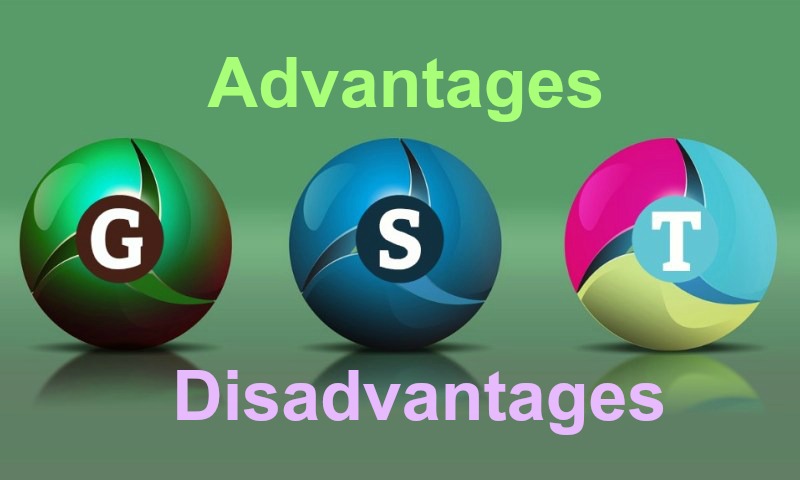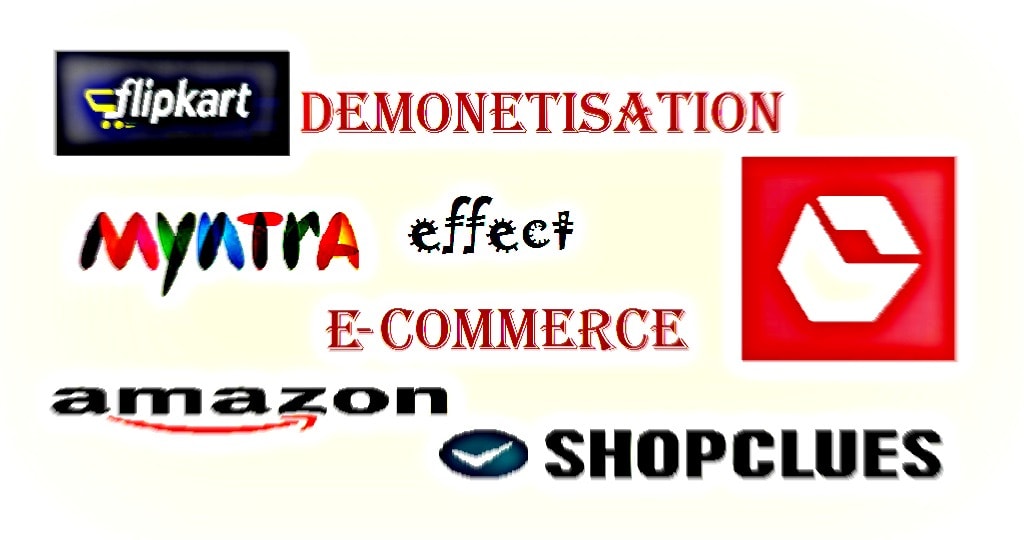Let’s first have a brief about what is GST before getting into advantages and disadvantages of GST. On 1st July 2017, after sixteen years in the making, GST (Goods & Service Tax)- a form of indirect tax was finally implemented. GST was 1st initiated by Vishwanath Pratap Singh 7th Prime Minister of India in 1986. Tax, before the GST implementation was levied on the full value of the good at each stage separately by both State and Union Governments. GST is a comprehensive, multi-stage, destination-based single tax levied on the value added at each stage with a full set-off for the taxes paid earlier in the value chain. It is applied to the goods and services at the place of final consumption. Therefore the customer only bears the GST charged by the last dealer.
GST has replaced the other many indirect tax laws that existed earlier in the nation. Taxes such as excise duties, service tax and state levies like VAT will be absorbed. GST is classified as (i) SGST – State GST (ii) CGST – Central GST (iii) IGST – Integrated GST, where both center and state will simultaneously levy GST for transactions within the state and for inter-state transaction center would collect IGST which would approximately be equal to SGST plus CGST. The tax rate differed from state to state, GST essentially ensures a comprehensive tax base helping the industries to reap benefits of the common procedure and claim credit for taxes paid.
After briefly understanding the meaning and different aspects of GST let’s see what are the advantages and disadvantages of GST.
Advantages of GST
I have figured out 18 advantages of GST over normal tax system let’s discuss them first.
1) The most important benefit is the removal of cascading effect, i.e. removal of tax on tax. Before the GST implementation, no set off against output VAT was provided on the service tax paid on input services. The GST structure aims to reduce the tax burden on the end-user as the input tax credit can be availed smoothly across the spectrum of goods and services.
2) Higher threshold for registration. Under the GST regime, the threshold is increased to INR 20 Lacs which exempts many small traders, earlier in most states any business with the turnover of more than INR %lacs was liable to pay VAT, which was also different in different states, and similarly, for service tax, the threshold was INR 10 Lacs.
3) Composition scheme for small business. It is optional to register under composition scheme. Any business with a turnover of less than INR 50 Lacs is eligible to opt for this. Only a quarterly return needs to be uploaded under GSTR-4 by 18th of July, October, January, and April. The purpose is to ease the burden of compliance which enables the small businesses to focus more on business and less on compliance.
4) Composition scheme also reduces the tax liability. The rates are minimal 1% for manufacturers, 2.5% for restaurant service providers and 0.5% for other suppliers.
5) Starting from registration to filing returns and payment of GST tax it’s an online procedure.
6) Startups won’t be running around tax offices for various registrations and procedures under excise, service tax and VAT.
7) The previous tax regime had excise, VAT and service tax and each had their own compliance procedure of payments and filing for returns. GST aims to unify all these reducing the compliance burden. There are about 11 returns under the GST regime out of which 4 are basic returns applicable to all taxable persons under GST.
8) GST regime seeks to bring in a defined treatment for e-commerce. There were never specific provisions for the e-commerce sector. Different states had different VAT laws for this sector. GST removes the complications and maps out the applicable provisions and procedures to be followed all over India.
9) Increased efficiency in Logistics. Earlier organizations and companies had to maintain multiple warehouses in different states to avoid the CST and state entry taxes as a result warehouses used to operate below their capacity leading to high operational costs. With the implementation of GST restrictions on inter-state movement will be reduced and the logistics industry will see more consolidation. As a result, many warehouse operators and e-commerce companies are interested in opening warehouses in Nagpur which is a strategic location as it is known as the zero mile city, instead of having at many other locations.
10) GST seeks to bring accountability and regulation in the two most unregulated industries of textile and construction. With online provisions for payments, compliances and availing input credit when the supplier accepts the amount it will bring more structure to the two industries.
11) Textile and clothing sector is now fully included in the tax structure. Previously parts like fabrics were outside the tax base which leads to informal behavior but not anymore now.
12) GST regime aims to remove the inadequacies in the taxation of imports. Taxes on domestic sales will be levied by the Centre and the States only when the imported goods first arrive into the nation with complete tax credits available to a greater extent. It will lead to transparency and a more effective taxation regime for imports.
13) Increase in the tax base. Due to GST in a span of two month of Jun-July 2017, 6.6 lakh new agents have registered under GST regime to avail the benefits.
14) More and more vital data. Earlier the Centre and State had little data about small manufacturers, consumption, and activities of local firms beyond their borders, therefore GST will now be able to generate a lot of data through tax collections.
15) The basic concept of GST is one country one tax promoting inter-state business and preventing unhealthy competition among states.
16) Reduction in tax evasion. Since GST will absorb all the other 17 indirect taxes the chances of corruption should be reduced.
17) The GST structure is highly driven by technology reducing human interference largely ultimately leading to speedy decision-making.
18) Imported goods are charged IGST- an integrated tax which roughly equal to Central GST plus State GST bringing equality with tax regime on local products. Besides imports, exports will also see a boost and moreover, exporters with the good record will be issued an immediate refund of 90% of their claims within a week.
Related- GST: A Complete Insight- Impact, Rates, and Conclusion
Disadvantages of GST
Besides the above listed many advantages the GST structure is also criticized for many reasons so let’s discuss disadvantages of GST which are listed below:
1) The GST structure has been marketed well to portray it as a simple concept but in reality, the understanding is complicated and distortionary to fully exploit the expected benefits.
2) Multiple tax rates and many complexities will result into tax disputes and lead to more corruption.
3) Such structure can also increase the business costs because exemptions imply cascading of costs due to lack of input tax credits.
4) Various issues recognized are usage of internet, number of return to be filed monthly, the final tax incidence on goods and services.
5) High confusion regarding the product classification and multiple rates is a major concern.
6) The food industry has criticized the levying of higher rates on value-added manufactured goods and has asked for a simpler regime.
7) GST regime has given 4 tax slabs of 5%, 12%, 18% and 28% to cover various products in the food industry rather than one or two rates which are generally seen in the developed markets.
8) The previous combined rate was usually 10 – 11% which now has gone up to 18% for preserved veggies like tomatoes, mushrooms and nuts, 28% for seasoning and mixed condiments, and for processed packed foods like instant mixes for idlis, dhoklas, soups, garlic ginger etc is 18%, ultimately leading to higher prices.
9) According to Khambatta, chairman of Confederation of Indian Industries national committee on food processing “The government should encourage food processing as it adds value, which helps farmers, instead of taxing [these products] at a higher bracket of 18%,”.
10) Concerns have been raised regarding the confusion and complexity when selling dairy products. For example paneer – the Indian cheese is tax-free if sold without branding and packaging but is charged 5% GST if sold in a container with branding. This also raises major concerns about the hygiene of paneer since informally produced paneer is tax-free and packaged is taxed. Similar concerns have been raised regarding sweetened milk which is generally is under 5% category but with the addition of pulp comes under 28% category.
11) The dairy industry faces many complex rates on the basis of product classification, another example is ghee. While many basic products come under 0% category ghee comes under 12% GST which is specifically going to hurt the sentiments of the poor as ghee is bought across the nation irrespective of the income.
12) Items like (i) Alcohol (ii) Real Estate and (iii) Electricity have been kept out of this regime defeating the purpose of one tax.
13) GST is a consumption tax and hence the disposable income of consumer will go down.
14) With low digital literacy in the nation, the success of GSTN is not very bright since it demands high participation and understanding of the compliance.
15) Tax credit claims work when previous members have paid taxes which requires each and everyone to be registered but with the huge level of informal industry in India it can turnout to be a major concern.
16) It can lead to an increase in the tax burden. It can happen because it has reduced tax competition. States which were keen to attract labor and investment had a reason to cut tax rates, however now with no such competition, the Centre can decide any rate which can be higher causing harm to the growth.






0 Comments